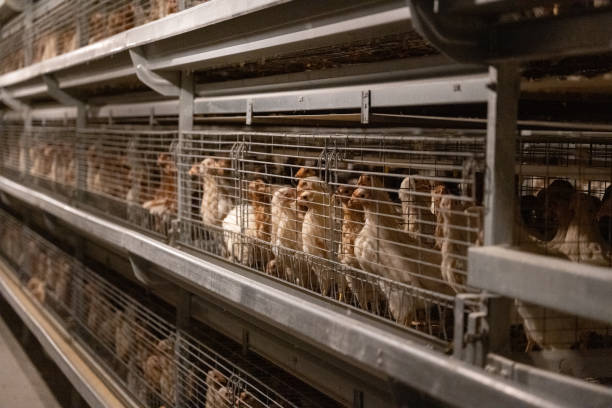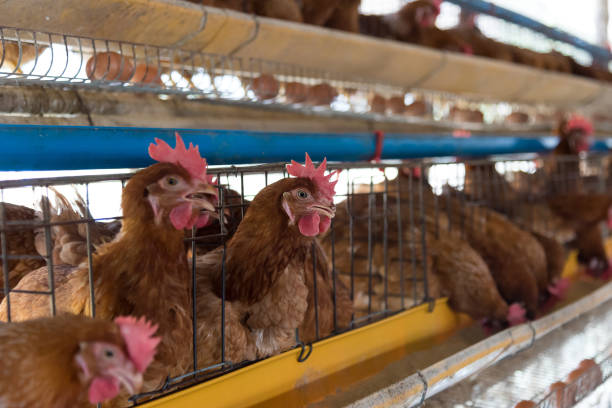
How Much to Start a Chicken Farm?
How Much to Start a Chicken Farm?
Starting a chicken farm can be a rewarding and profitable venture, especially with the growing global demand for poultry products. Whether you’re looking to raise chickens for eggs, meat, or both, one of the most common questions aspiring farmers ask is: How much does it actually cost to start a chicken farm? The answer depends on several key factors — including the type of operation, scale, location, equipment quality, and whether you’re going commercial or just backyard-level. In this guide, we’ll break down all the major expenses involved so you can plan your budget wisely and set up a successful poultry business from day one.
Understanding Your Startup Costs
Before diving into the numbers, it’s important to identify what kind of chicken farming you want to do. Are you starting small with a few hundred layers for egg production, or aiming big with thousands of broilers for meat? This decision alone will dramatically affect your spending. Let’s walk through the primary areas where costs come in:
First, land and housing. If you already own property, that’s a huge advantage. But if you’re starting from scratch, you’ll need space for coops, storage, feed, and possibly processing (depending on local regulations). For a medium-scale operation (around 2,000–5,000 birds), a simple poultry house measuring 30m x 10m might be sufficient. Construction costs vary widely by region — in many parts of Asia, Africa, or Latin America, it may range from $8,000 to $15,000 using locally sourced materials. In more developed countries, the same structure could cost double due to higher labor and material prices.
Then comes the biggest variable: equipment. High-quality automatic feeding systems, drinking lines, ventilation fans, and manure removal systems make a massive difference in efficiency and animal health. At Livi Machinery, we’ve seen customers cut labor costs by over 40% just by upgrading from manual to automated systems. For example, an automatic layer cage system for 3,000 hens might cost between $12,000 and $16,000, depending on features like egg collection belts and step-saving designs. Broiler floor systems with climate control add another $5,000–$10,000. Don’t forget about incubators — a decent 5,000-egg capacity model runs around $3,000–$6,000 and is essential if you plan to hatch your own chicks.
Birds, Feed, and Day-to-Day Expenses
Once infrastructure is in place, you’ll need to purchase your starter flock. Day-old chicks typically cost between $1.50 and $3 each, depending on breed and supplier. So for 3,000 birds, that’s roughly $6,000 upfront. Specialty breeds like high-performing layer hybrids (e.g., Lohmann or Hy-Line) tend to be pricier but offer better feed conversion and egg output over time.
Feed is usually the largest ongoing expense in any poultry farm. A single laying hen eats about 110–120 grams of feed per day. Over a 70-week laying cycle, that adds up to nearly 30 kg per bird. If bulk feed costs $0.40 per kg, feeding 3,000 layers for a full production cycle would run close to $36,000. Meat birds consume less but grow faster — a broiler reaches market weight in just 5–6 weeks, requiring around 4–5 kg of feed total. With feed prices fluctuating globally, many successful farms invest in feed storage silos and negotiate bulk deals early.
Other routine costs include vaccinations, health supplements, utilities (especially lighting and heating during winter), labor, and transportation. Even small operations benefit from basic record-keeping software or apps to track mortality rates, egg production, and feed usage. Some farmers also budget for biosecurity measures like footbaths, rodent control, and fencing, which prevent disease outbreaks and protect long-term profitability.
Hidden Costs & How to Save Smartly
Many first-time farmers underestimate indirect expenses. Permits and registration fees may apply depending on your country. Environmental compliance — such as waste management plans or odor control — is increasingly regulated in urbanizing areas. Then there’s marketing: if you plan to sell directly to consumers or restaurants, packaging, branding, and delivery logistics aren’t free.

One smart way to reduce startup costs is choosing modular, scalable equipment. For instance, instead of building a giant barn from the beginning, start with one or two automatic cage rows and expand as profits allow. Used machinery can save money too, but beware of worn-out parts or outdated technology that increases maintenance headaches later. We at Livi always recommend investing in durable, rust-resistant galvanized steel cages — yes, they cost more initially, but last 15+ years with minimal repairs.
Energy efficiency is another area worth attention. Solar-powered ventilation systems or LED lighting not only lower monthly bills but often qualify for green energy incentives in certain regions. Also consider multi-functional equipment — some modern incubators now integrate hatching and chick sexing, reducing the need for extra tools.
Finally, don’t overlook training and support. A well-trained team prevents avoidable losses. Poor handling, inconsistent feeding, or incorrect temperature settings can ruin an entire batch. That’s why Livi offers free installation guidance and remote troubleshooting — because no matter how good your gear is, success depends on how well it’s used.
Plan Ahead, Build Strong, and Ask for Help
There’s no one-size-fits-all answer to “how much” a chicken farm costs, but here’s a realistic mid-range estimate: Starting a semi-automated layer farm for 3,000 birds with modern equipment could cost between $35,000 and $50,000. A similarly sized broiler operation might take $30,000–$45,000. Small backyard setups can begin under $5,000, while fully automated commercial farms for 20,000+ birds may exceed $200,000.
The key takeaway? Plan carefully, prioritize quality over shortcuts, and choose partners who stand behind their products. At Livi Machinery, we’ve helped hundreds of farmers across Africa, Southeast Asia, South America, and Eastern Europe launch efficient, sustainable poultry businesses. From design consultation to delivery and setup advice, our team supports you every step of the way — because your success is ours too.

If you’re serious about starting your own chicken farm and want a tailored cost estimate based on your location, goals, and available resources, get in touch with us today. Share your project details — how many birds, egg or meat focus, current land situation — and we’ll send you a customized layout plan and equipment quote within 24 hours. Click below or email us directly to begin your journey toward a smarter, more profitable poultry farm.
Frequently Asked Questions
How much land do I need to start a chicken farm?
For a 3,000-bird cage system, you’ll need approximately 300–400 square meters, including space for the coop, feed storage, and waste management. Larger operations require more buffer zones depending on local zoning rules.
Can I start a chicken farm with $10,000?
Yes, but on a smaller scale. With $10,000, you can build a basic poultry house and buy manual systems for 1,000–1,500 birds. It won’t be fully automated, but it’s a solid starting point you can grow from.
What is the cheapest way to start chicken farming?
Begin with a backyard-style operation using recycled materials for coops and manual feeding/drinking systems. Raise slow-growing native breeds that require less intensive care and buy feed in local markets. However, expect lower productivity and higher labor input.
How soon can I recover my investment?
In well-managed layer farms, ROI typically happens within 12–18 months. Broiler farms cycle faster (every 6 weeks), so cash flow improves quickly, though profit margins are thinner per batch.
Do I need special permits to start a chicken farm?
It depends on your country and farm size. Small family-run farms may not require licenses, but commercial operations usually need health department approval, environmental clearance, and sometimes animal welfare certifications.
Which is more profitable: egg or meat chickens?
Layer farms generally provide steadier income over time, while broilers offer quicker turnover. Many successful farmers diversify — using spent hens for meat or combining both systems seasonally.
How do automation systems reduce long-term costs?
Automated feeders and drinkers minimize waste and ensure consistent nutrition. Egg belt systems save hours of daily labor, and climate controls reduce bird stress and improve survival rates — all boosting net profits.
What breeds should beginners choose?
For eggs: Hy-Line Brown, Lohmann White, or ISA Brown are popular high-yield choices. For meat: Cobb 500 or Ross 308 grow fast and convert feed efficiently. Always source chicks from reputable hatcheries.
Is raising chickens difficult for beginners?
It has a learning curve, especially in disease prevention and temperature management. But with proper training, reliable equipment, and mentorship, even first-timers can succeed — many of our clients had zero experience before starting.
Where can I get technical help during setup?

Livi Machinery provides free post-purchase support, including site planning, installation videos, and live chat assistance. We also connect new farmers with regional distributors who offer hands-on service.
